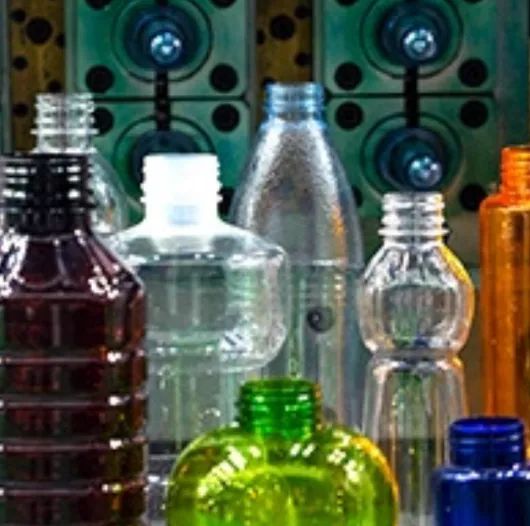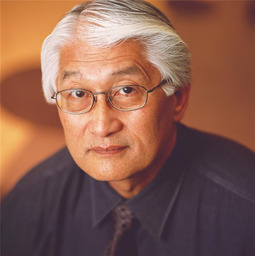Injecting Some Reality into Plastics Pollution


In a recent blog calling for urgent partnership on climate-related solutions, Hitachi Vantara CEO, Gajen Kandiah, rightly identified the insidious linkage between CO2 emissions, deforestation and our increasingly polluted oceans and their impact on climate change.
I was a little surprised by the actual degree of devastation caused by microplastics in the oceans, Earth’s largest carbon sink. One of the many problems of the plastic pollution, is that phytoplankton that traps and absorbs carbon are choking on the microplastics that are generated from the wearing down of the more than 8 million tons of plastic we dump into rivers, streams, and oceans each year.
Experts estimate that by the year 2050, there will be more plastic by weight than there will be fish in the sea. Beside absorbing carbon, the phytoplankton is at the bottom of the food chain, and as such, consumed by larger species. Those microplastics not only degrade the ability of the tiny organisms to capture carbon from the air, but the plastics they absorb instead eventually make their way into humans.
This makes me think twice about eating my favorite sushi. As I looked into this a little more, I found that microplastics are everywhere, even in the bottle of water that we think is the purest form of water we can drink.
Plastics never decompose. When plastics are exposed to sun, air and sea water or buried in landfills , the larger pieces degrade into smaller pieces. The smallest pieces, with a size smaller than 5 millimeters, are called microplastics. Some variations are so microscopic they pass through filters meant to remove impurities from our drinking water. In 2017 Time magazine reported on a test in which 259 bottles of water from 11 brands bought in nine countries were tested for microplastics. The researchers found that more than 90 percent of the bottles contained microplastics.
Some may think that biodegradable plastics would be a solution. However, during the degradation process, biodegradable plastics can actually create more microplastics. Biodegradation works well in a lab environment but when it occurs in the wild, as in a landfill or the ocean, it creates more of a hazard.
Consider this a public service announcement: Ingesting plastics is not good for you. They contain chemical additives, a number of which have been associated with serious health problems, including cancers, infertility, and neurodevelopment disorders like ADHD and autism. Plastics also accumulate bacteria, viruses, other chemicals, and harmful algae. Plastics also acts as a conduit for the transport of algae and colonizing bacteria.
Yes, plastic can be recycled. However, there are many problems that make it difficult and expensive. As a result the recycling rate in the US is only 5% and the rest of the plastic that we religiously separate and put into designated trash bins goes into landfills according to NPR.
Some plastics can be melted down and reused, but the resulting plastic has lower grade use as the long chains of molecules get broken up. Still some other plastics cannot be melted down and reused. Finally, mixed collections of waste plastic contain a wide assortment of chemicals, colors, food scraps, and reenforcing metals, all of which makes it increasingly expensive to separate and manage. And – Styrofoam may be great for keeping our coffee warm and protecting things that we ship; but it is bulky to transport and is full of air, which means less plastic can be recovered from the expensive recycling process.
One of Hitachi’s sustainability goals is to create a circular economy and the recycling of plastics is a key requirement. To wit, Hitachi has several projects aimed at the challenge.
Every Hitachi facility is doing its part to reduce plastic use and recycle what they can. Some efforts are very basic such as eliminating the use of plastics in cafeterias. In addition, the plastic used in the packaging of components delivered to us is recycled and used to manufacture polyethylene garbage bags and plastic folders.
Some of our factories are even converting plastic into RPF, an abbreviation for Refuse Paper & Plastic Fuel. It is made from wastepaper and plastics that are difficult to recycle. RPF has the advantages of controllable calorific value, high calorie content, and excellent storability. It is used in many industries as a solid fuel alternative to fossil fuels. Compared to coal, RPF is a high-grade fuel that can reduce CO2 emissions by about 33% in the process of recovering heat during combustion. It contributes to the conservation of the global environment by saving fossil fuels and extending the life of landfill sites.
Hitachi is also working on creating a scheme for recycling plastics from used home appliances. This work has included activities such as devising special techniques for creating a supply chain for high-quality plastic recyclables and reviewing product design and manufacturing operations.
These efforts have enabled more use of recycled polypropylene materials in Hitachi refrigerators. By FY2018, the recycled polypropylene content of Hitachi refrigerators had risen from about 20% to about 50%. The company plans to continue these activities to make further improvements in the rate of recyclables used.
But this is not trivial work. To use recycled materials with material properties that fluctuate from lot-to-lot, conventionally, a skilled operator has to make fine manual adjustments to the injection molding process conditions all according to the material properties. The type and number of recycled materials used, however, because it is expensive and time consuming and manufacturers require that recycled materials maintain consistent properties. For its part, Hitachi has devised a system of installed sensors inside the plastic injection molds to measure fluctuations in the properties of the recycled material and then analyze the sensing data using machine learning. This automates the process, improves the quality of the end product and reduces costs of recycling.
Not to be left out, Hitachi has developed wonderful innovations in the area of water purification and desalination as well, that help to remove microplastics from the environment.
Hitachi’s 2022 Sustainability Report includes a plan for increasing the utilization rate of plastic waste in its Environmental Action plan for 2024. Taking into account the growing urgency of environmental issues in the world and the management policies of Hitachi, the company has formulated an Environmental Vision that clearly outlines our vision for society from a long-term perspective. Hitachi is committed to building a decarbonized society, a resource efficient society, and a harmonized society with nature.

Hu Yoshida spent 24 years at Hitachi Vantara helping define technical direction and enabling customers to address their digital transformation needs. He is widely known in the industry and was instrumental in evangelizing Hitachi's unique approach to storage virtualization.